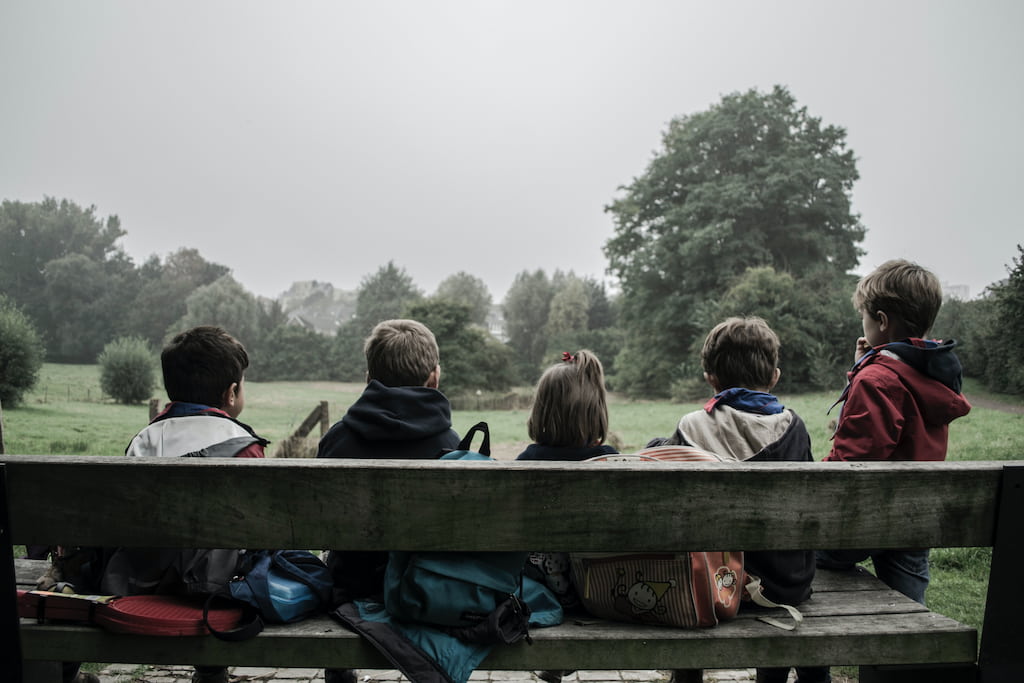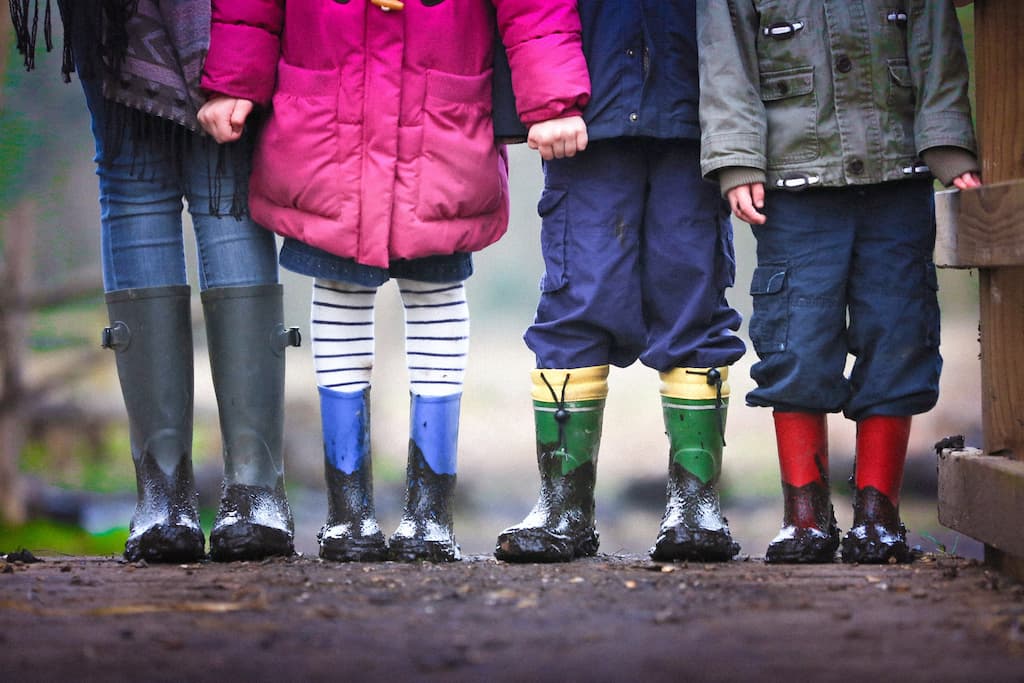How can we develop a sense of responsibility in children?

Content
What’s a responsibility and how is it developed?
With the exception of infancy, we all undertake certain duties and responsibilities throughout our lives. These actions, while not always enjoyable, are actually part of our growth process. We often get our cues for accountability, ownership, and responsibility from our caregivers, seeing them as models for how to navigate day-to-day life. Ideally, these caregivers guide the development of children, ultimately giving them the space to stand on their own. Assigning particular responsibilities can facilitate the child’s learning of their own limitations and boundaries essential for their continued growth and development.
One Theory of Human Development: John Locke’s “Blank Slate”
Learning, in the most basic sense, is the long-term acquisition of information and subsequent change in behavior that one develops as a result of their lived experiences. According to philosopher John Locke, we are all born as a “blank slate”. We begin to fill in that blank space as we gather information from our sensory experiences, or in other words, through the learning process. A child is often a keen observer and student from the moment of birth, acquiring certain behaviors as a result of what they see, hear, smell, taste, and touch. They learn what’s acceptable and what’s not often through the lens of their first teachers: their parents or caregivers. Through this lens and these role models, they begin to shape their perspective, behaviors, and even their emotions. A baby’s most basic need is to survive, and in this, we, as parents and caregivers, become the baby’s guide.
Because these role models are so essential to a child’s learning, they too must examine the behaviors they’re modeling. Say, for example, you’d like your child to bring their bags to their room each time they enter the house instead of leaving them lying around. If this is the expectation you’ve set and yet you’re still leaving your things around, a child may be less inclined to meet your initial expectation because you yourself aren’t doing it. That said, we’re all human and we do have our moments where we don’t meet our own expectations. Ultimately, healthy communication is key, so you can set expectations and work through it together when they’re not met.

Set Realistic Expectations & Remember: They’re Still Children
Every caregiver wants their child to be a self-sufficient individual. Therefore, assigning small age-appropriate responsibilities early on can help contribute to this development. Remember, every child is unique and we want to make sure to avoid unrealistic expectations or comparisons to other children. We want to treat the child as a whole person, no matter their age, with real feelings, emotions, and thoughts, honoring their cognitive, emotional, and social development. As we assign particular tasks and responsibilities, we should try paying special attention to the child’s abilities. If the child is assigned a task beyond their capacity in the current moment, it’s okay to let them try, to let them experience failure as a part of the learning process. That said, setting high expectations and enforcing repetitive practice may diminish the child’s desire to try. It’s a delicate balance.
There are so many theories of child development out there and it can be helpful to have a grasp of some of them when considering which tasks to assign your child. For instance, it may not be developmentally appropriate to expect a two year old to tie their shoes. This doesn’t mean they shouldn’t be encouraged to try, but perhaps we start with asking them to put their playdough back into the containers instead as a first step. Thus, the child learns that the dough must be put in the containers after playing through guidance and with support. When children begin to develop a concept of self or an understanding of themselves as an individual, they can begin to try other smaller tasks, fostering their sense of independence. Doing this as early as possible can be particularly helpful for the transition to school, when they’ll likely begin to take on even more responsibilities.
It’s important that we understand the scope of responsibility when it comes to adults versus children. Adults, for example, may have the responsibility of paying their bills, or holding a job, or caring for someone. Whereas the concept of responsibility for children can be much smaller behavioral responsibilities like putting their things away, tying their shoes, and so on. We want to encourage self-confidence within children while also acknowledging that learning means we didn’t know something before, it may take time to learn, and we’re always evolving throughout that process. Emphasizing that the effort is important rather than the results of the actions can encourage the child’s can-do attitude and self-confidence as they improve over time.

Remember, none of us is born knowing everything: We try, we fail, and we learn. So we should let the kids try too instead of stepping in to correct or to “do it right” before they’ve had a chance to experience it for themselves. This can be difficult as caregivers because often our impulse is to help or redirect, but there’s powerful learning that’s taking place as our children navigate new, previously unknown skills and abilities.
The more children are allowed to experience and see what they can do, the more competent, curious, and willing they often become, especially between the ages 0-6. Sometimes there’s this perception of “They’ll do it once they grow up,” which can be misleading as a child won’t often demonstrate skills they’ve never learned in the first place, even as an adult. In order for children to take responsibility in their adult life, it’s important that they take responsibility for themselves, as well as see caregivers who are also modeling that same kind of behavior.
After the age of 6, a child can often take on some responsibilities within the distribution of household chores. This is when cooperation and clear communication come into play, enabling the child to observe teamwork with the help of their caregivers. At this point, it’s crucial that caregivers have their own responsibilities and that every member of the household is included when it comes to chores. While the adults set the table, for example, the child may be asked to bring and place the napkins. Thus, the child witnesses both a collective division of labor and learns that they can take part in household chores just as everyone else does.
To help encourage children to act, particularly when we’re in difficult pandemic conditions, it can be useful to assign them to the domestic division of labor. Activities such as collecting toys after scattering them around, feeding the household pet, putting their clothes into the laundry basket, tidying their room, or helping to set and clear the table can be great ways to start to build that self-confidence and sense of community care.
What does age-appropriate look like?

You know your child best, so it’s up to you to determine when to begin assigning certain tasks and you may have to make adjustments as you go. That said, children who are under two may be a little too young for specific responsibilities. For ages two and above, there are other age-appropriate tasks you can assign.
Responsibilities for Kids Ages 2-3
For this age range, we should aim for simple tasks. Maybe that means after you’ve collected all the dirty dishes in the dishwasher, you ask your child to press the start button. Or, maybe you ask your child to throw away or compost their remaining food. Or, perhaps your child wants to try eating by themselves using their own utensils and glasses. Actions that support self-care, such as brushing teeth and washing hands, can also be options for this group.
Responsibilities for Kids Ages 4-5
Between the ages of 4-5, children can continue to build their independence by putting food back into the refrigerator on a shelf that’s their height, helping to set the table, clearing the dishes, assisting with cooking, dressing themselves, picking up the laundry, or caring for a sibling.
Responsibilities for Kids Ages 6-12
Around the ages of 6-12, children can begin to organize and care for their belongings, feed pets, water plants in the house, clean their room, prepare their school materials a day in advance, do their homework, and help with the preparation of a meal.
Responsibilities for Kids 13+
Children ages 13 and older can take on more advanced responsibilities. That can mean they’re doing the dishes from start to finish, helping with shopping, managing their own budget, saving money, cleaning their rooms, staying home alone, and so on.
Children need the support and approval of their caregivers from the moment they are born and as caregivers our feedback can serve as a beacon for how to move through the world as their most authentic selves. Feedback should be encouraging, empathetic, and full of compassion. It’s important to name the strengths you see your child demonstrating, encouraging your child to continue learning and growing.
Every caregiver aims to raise their child as a responsible adult who can navigate all the highs and lows of life as easily as possible. The role of caregivers on the way to this goal is undeniable and we can’t forget that assigning tasks according to the age and development of the child can contribute to their becoming a self-sufficient individual.
Author: Senior Psychologist Ilgın Şirin





